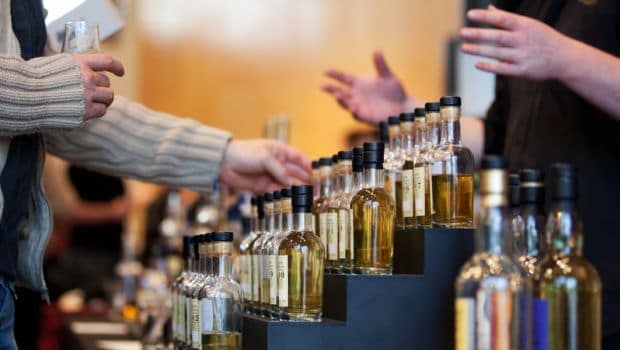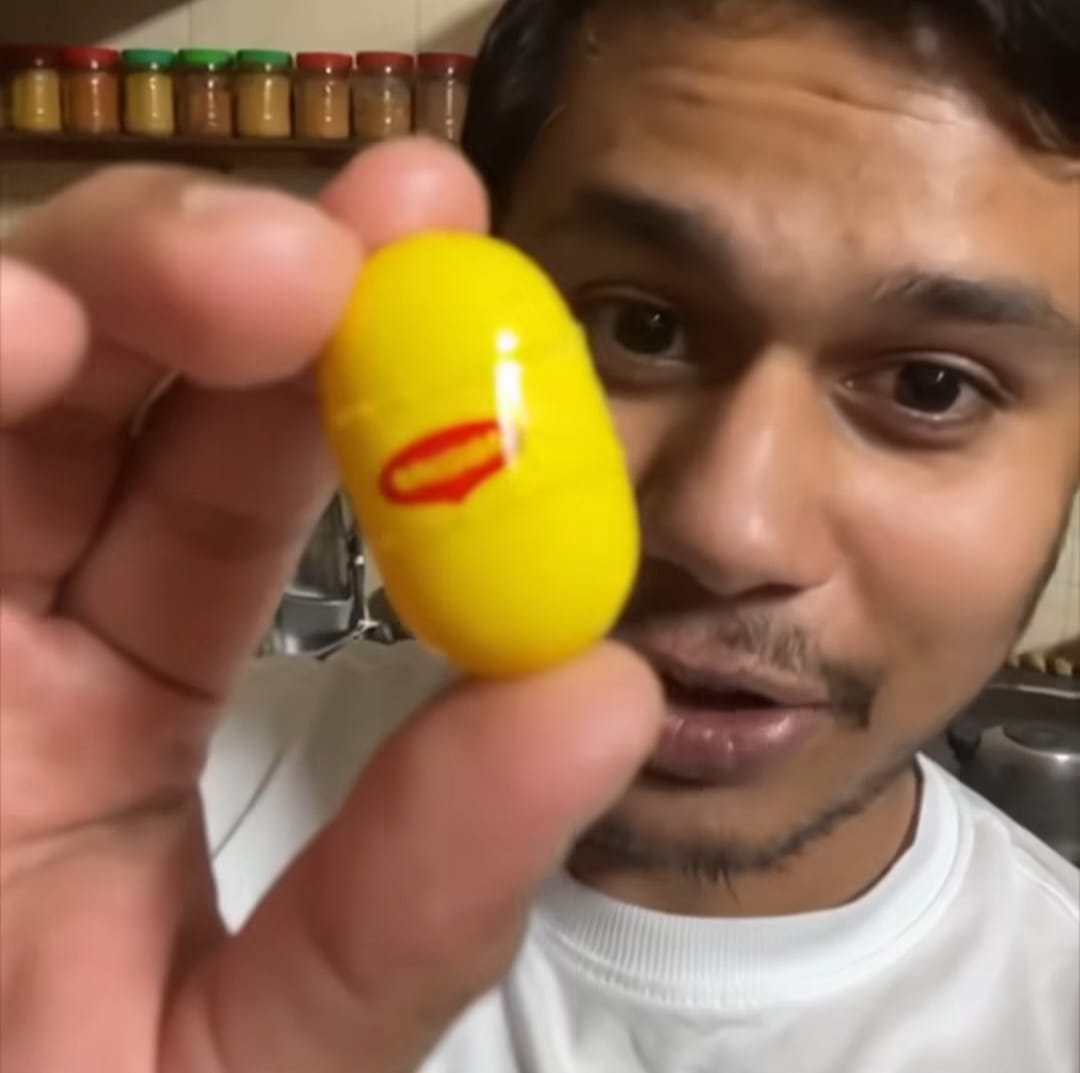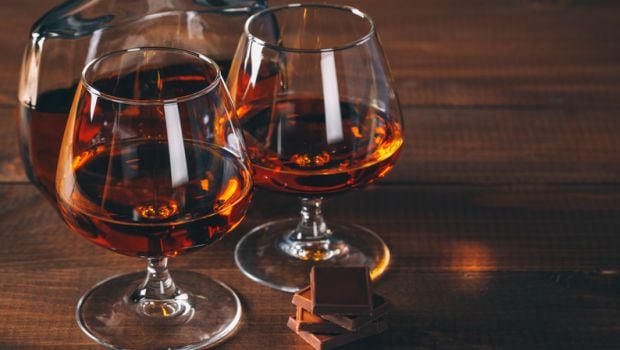If there’s something that can grab your attention as you’re sipping one of the world’s finest whiskies, it’s probably a good story. Darren Hosie is not just a storehouse of information on whisky but also a master storyteller (and yes, he narrates his stories in an inimitable Scottish accent). He is an international brand ambassador of a leading whisky brand; I interacted with him over rounds of outstanding whisky at the Park Hyatt in Chennai recently.The Single Malt that Started it AllMy favourite story of the evening was about the single malt that started it all. King George IV demanded a glass of whisky during his maiden visit to Scotland in 1822. The only problem was that whisky was not legal, not even in Scotland. But nobody turns down a king’s request. The Excise Act was passed in 1823 and hence whisky brands were formally established. The word whisky owes its origins to ‘Uisge Beatha’ a Gaelic term that means ‘water of life’. The Irish and the Scottish still argue over bragging rights for the world’s oldest whisky. Earlier this year, I was at an old distillery near Belfast that dates back to 1608 and commenced operations with a royal charter issued by King James I. It’s the Scottish who somehow seem to have made single malt whisky their very own.
So What is Single Malt Whisky?A single malt must be made from malted barley, distilled in pot stills at a single distillery and must be aged in oak casks not exceeding a capacity of 700 litres. The key definition being that it has to be from a single distillery and also that it should not contain any other grains (aside from barley).

The Manufacturing ProcessIt all begins with water being added to barley for germination. This is done because whole barley kernels don’t ferment too well. The germination process also converts the starch into fermentable sugars. Most distillers are obsessed with the water that goes into the whisky at every stage and this is the case not just in Scotland. I spotted an underground cave spring in a distillery in Tennessee, which is a year-round source of iron-free water, one the most important ingredients in a bottle of whisky. Water is added again, just before fermentation with ground barley, to create a mash and also to dilute the whisky before maturation.The barley is usually dried in a space called the malting floor where warm air is sent through perforations to dry the barley. This is the stage where some distilleries use smoke from burning peat (you will not usually find this across the ocean in Ireland) to stamp a smokey flavour in addition to drying the barley. Non-peated whiskies use only hot air. This malt is then transformed into a coarse flour to which hot water is added to extract the sugars while yeast is used to ferment the malted barley. The liquid, called the wash, is then distilled in copper pot stills, taking the alcohol content to over 60%. This is usually achieved after a second and occasionally, triple distillation. The malt whisky is finally diluted (with water) to about 62.5% a.b.v. (alcohol by volume) before it is placed in casks for maturation. The choice of casks is another key decision. Most single malts ‘reuse’ bourbon casks (that are usually shipped from American whiskey manufacturers) while some use sherry casks. Single malts are expected to be aged for a minimum of three years; most single malts are aged much longer than three years.
Single Malts are Blends Too!Most of us assume that single malts are from a single batch or a single barrel. Single malts are actually from a single distillery and could actually be a blend of whiskies from different batches or barrels. This is different from a blended whisky that could feature whiskies from different distilleries. Again, some of us tend to assume that single-grain scotch whiskies are made from a single grain but these whiskies usually contain barley and another grain (corn or wheat).

Not All Single Malts are from ScotlandAside from Scotland’s five traditional single malt regions (Island, Lowland, Highland, Speyside and Isley) a plethora of ‘new world’ single malt whiskies are trending just like new world wines a decade or two ago. From Japan’s Yoichi to India’s Amrut to Taiwan’s Kavalan, quite a few Asian single malts are on the global radar among whiskey aficionados.How to Enjoy Your Single Malt
Almost every whisky expert I’ve met almost always suggests that the best way to enjoy an expensive single malt is to add a few drops of water from the same source as the whisky. That’s clearly impossible unless you’re tasting the whisky as part of a distillery visit. The best advice I’ve heard is ‘enjoy your whisky the way you like’. So whether you want to pop an ice cube or two or add top up your glass with water or cola, it is of course your call. However, most aficionados will concur that ice will dilute and numb the flavours. It’s the same with fizzing up your single malt with soda. Probably the best way to enjoy a single malt (or any whisky) is to add a few drops of water (at room temperature) that allow your whisky to ‘open up’ and unravel its true flavours.About the Author : Ashwin Rajagopalan is a cross cultural training expert and lifestyle writer. When he's not writing about food, he thinks about gadgets, trends and travel experiences. He enjoys communicating across cultures and borders in his weekday work avatar as a content and editorial consultant for a global major and one of India's only cross cultural trainers.Disclaimer:The opinions expressed within this article are the personal opinions of the author. NDTV is not responsible for the accuracy, completeness, suitability, or validity of any information on this article. All information is provided on an as-is basis. The information, facts or opinions appearing in the article do not reflect the views of NDTV and NDTV does not assume any responsibility or liability for the same.
So What is Single Malt Whisky?A single malt must be made from malted barley, distilled in pot stills at a single distillery and must be aged in oak casks not exceeding a capacity of 700 litres. The key definition being that it has to be from a single distillery and also that it should not contain any other grains (aside from barley).

The Manufacturing ProcessIt all begins with water being added to barley for germination. This is done because whole barley kernels don’t ferment too well. The germination process also converts the starch into fermentable sugars. Most distillers are obsessed with the water that goes into the whisky at every stage and this is the case not just in Scotland. I spotted an underground cave spring in a distillery in Tennessee, which is a year-round source of iron-free water, one the most important ingredients in a bottle of whisky. Water is added again, just before fermentation with ground barley, to create a mash and also to dilute the whisky before maturation.The barley is usually dried in a space called the malting floor where warm air is sent through perforations to dry the barley. This is the stage where some distilleries use smoke from burning peat (you will not usually find this across the ocean in Ireland) to stamp a smokey flavour in addition to drying the barley. Non-peated whiskies use only hot air. This malt is then transformed into a coarse flour to which hot water is added to extract the sugars while yeast is used to ferment the malted barley. The liquid, called the wash, is then distilled in copper pot stills, taking the alcohol content to over 60%. This is usually achieved after a second and occasionally, triple distillation. The malt whisky is finally diluted (with water) to about 62.5% a.b.v. (alcohol by volume) before it is placed in casks for maturation. The choice of casks is another key decision. Most single malts ‘reuse’ bourbon casks (that are usually shipped from American whiskey manufacturers) while some use sherry casks. Single malts are expected to be aged for a minimum of three years; most single malts are aged much longer than three years.
Single Malts are Blends Too!Most of us assume that single malts are from a single batch or a single barrel. Single malts are actually from a single distillery and could actually be a blend of whiskies from different batches or barrels. This is different from a blended whisky that could feature whiskies from different distilleries. Again, some of us tend to assume that single-grain scotch whiskies are made from a single grain but these whiskies usually contain barley and another grain (corn or wheat).

Not All Single Malts are from ScotlandAside from Scotland’s five traditional single malt regions (Island, Lowland, Highland, Speyside and Isley) a plethora of ‘new world’ single malt whiskies are trending just like new world wines a decade or two ago. From Japan’s Yoichi to India’s Amrut to Taiwan’s Kavalan, quite a few Asian single malts are on the global radar among whiskey aficionados.How to Enjoy Your Single Malt
Almost every whisky expert I’ve met almost always suggests that the best way to enjoy an expensive single malt is to add a few drops of water from the same source as the whisky. That’s clearly impossible unless you’re tasting the whisky as part of a distillery visit. The best advice I’ve heard is ‘enjoy your whisky the way you like’. So whether you want to pop an ice cube or two or add top up your glass with water or cola, it is of course your call. However, most aficionados will concur that ice will dilute and numb the flavours. It’s the same with fizzing up your single malt with soda. Probably the best way to enjoy a single malt (or any whisky) is to add a few drops of water (at room temperature) that allow your whisky to ‘open up’ and unravel its true flavours.About the Author : Ashwin Rajagopalan is a cross cultural training expert and lifestyle writer. When he's not writing about food, he thinks about gadgets, trends and travel experiences. He enjoys communicating across cultures and borders in his weekday work avatar as a content and editorial consultant for a global major and one of India's only cross cultural trainers.Disclaimer:The opinions expressed within this article are the personal opinions of the author. NDTV is not responsible for the accuracy, completeness, suitability, or validity of any information on this article. All information is provided on an as-is basis. The information, facts or opinions appearing in the article do not reflect the views of NDTV and NDTV does not assume any responsibility or liability for the same.
Advertisement
About Ashwin RajagopalanI am the proverbial slashie - a content architect, writer, speaker and cultural intelligence coach. School lunch boxes are usually the beginning of our culinary discoveries.That curiosity hasn’t waned. It’s only got stronger as I’ve explored culinary cultures, street food and fine dining restaurants across the world. I’ve discovered cultures and destinations through culinary motifs. I am equally passionate about writing on consumer tech and travel.
For the latest food news, health tips and recipes, like us on Facebook or follow us on Twitter and YouTube.
Tags:






